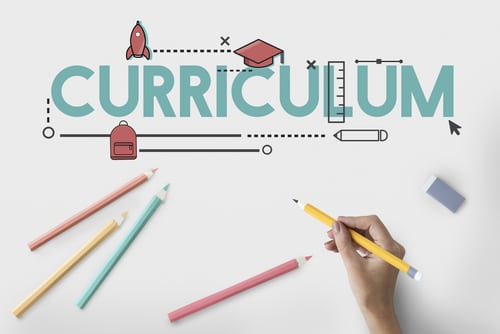Your guided pathway program is up and running. Still, how do you make sure your students are learning what they need to know? With the list below, colleges can use these proven guardrails to ensure students are learning on a guided pathway.
List clear learning outcomes for students and instructors
Most importantly, college administrators know clear learning outcomes are the foundation of a good, guided pathway program. Thus, students must know what they are signing up to learn how to do. Instructors must know what to teach. Clear learning objectives let colleges measure students’ learning. Therefore, clear learning objectives can be tested. They align with the key competencies that students will need to demonstrate on the job. With clear objectives defined, staff can spot-check their students’ learning.
Embed guidance throughout the program to ensure students are learning
To do that, smart schools ensure students are learning by embedding check-ins throughout the program. Students meet regularly with counselors, teachers, and mentors. Colleges that delegate traditional guidance counselor office tasks among faculty see better student engagement. Therefore, when guidance is embedded in the program and offers many touchpoints to students, they use it. Instructors should talk and meet frequently with their students too.
Provide frequent feedback to students to keep students on a guided pathway
Moreover, instructors can give students frequent feedback. Teachers let students know when they did well and show them what they need to do better. Thorough professors explain what steps are needed to improve. Everyone benefits when feedback is constructive. Besides that, faculty can be taught how to deliver clear, actionable feedback to diverse students. Schools should provide resources for faculty like awareness training. Thus, staff can use these sources to ensure students are learning.
Make tutoring accessible to all students
Besides that, when institutions embed and offer tutoring services, they see students participate in the programs. Students do better when they know the costs and availability of tutoring upfront. As well, the school must be mindful of the stigma surrounding tutoring and ensure to minimize any negative connotations. Institutions benefit by providing diverse and inclusive tutors. Students will relate to tutors who are alike in ethnicity, culture, and economic status.
Use effective teaching techniques
Most importantly, colleges must ensure their educators use effective teaching techniques to guarantee students are learning. Part-time, workplace adjunct faculty should have access to professional development. Therefore, classroom audits help safeguard that these teaching techniques are being used by faculty. Administrators can survey and gather instructional data from their professors. Survey data helps to improve current and future guided pathway programs as well as strengthen staff instructional skills.
Supply on-the-job training and intern opportunities to ensure students are learning
To ensure students are learning, create opportunities for them to intern or shadow in their future, work field. On-the-job-training programs do not run themselves. Faculty can review the latest developments in a business or technical field to ensure students are on the best path. Thus, students need this time and opportunity to job shadow. Likewise, students and faculty can meet and confirm that the career path matches student expectations. If the path is no longer a fit for the student, the institution needs to offer an off-ramp to another guided pathway.
Inform students on how much the program costs
Still, many students might not complete a program when they are close to finishing it. They believe the costs are too much. Students will abandon a program if they do not see financial benefits. Colleges, their leaders help students commit to programs when costs are defined upfront. Students can budget. Students can manage course loads. Students can select a program that fits both their talents and their budgets.
In sum, guided pathway programs are successful when administrators put in place proven guardrails. Elements like frequent check-ins with students and faculty guidance ensure that students are learning, so students are successful. Most importantly, transparent communication of program costs and learning objectives helps attract and retain students.




